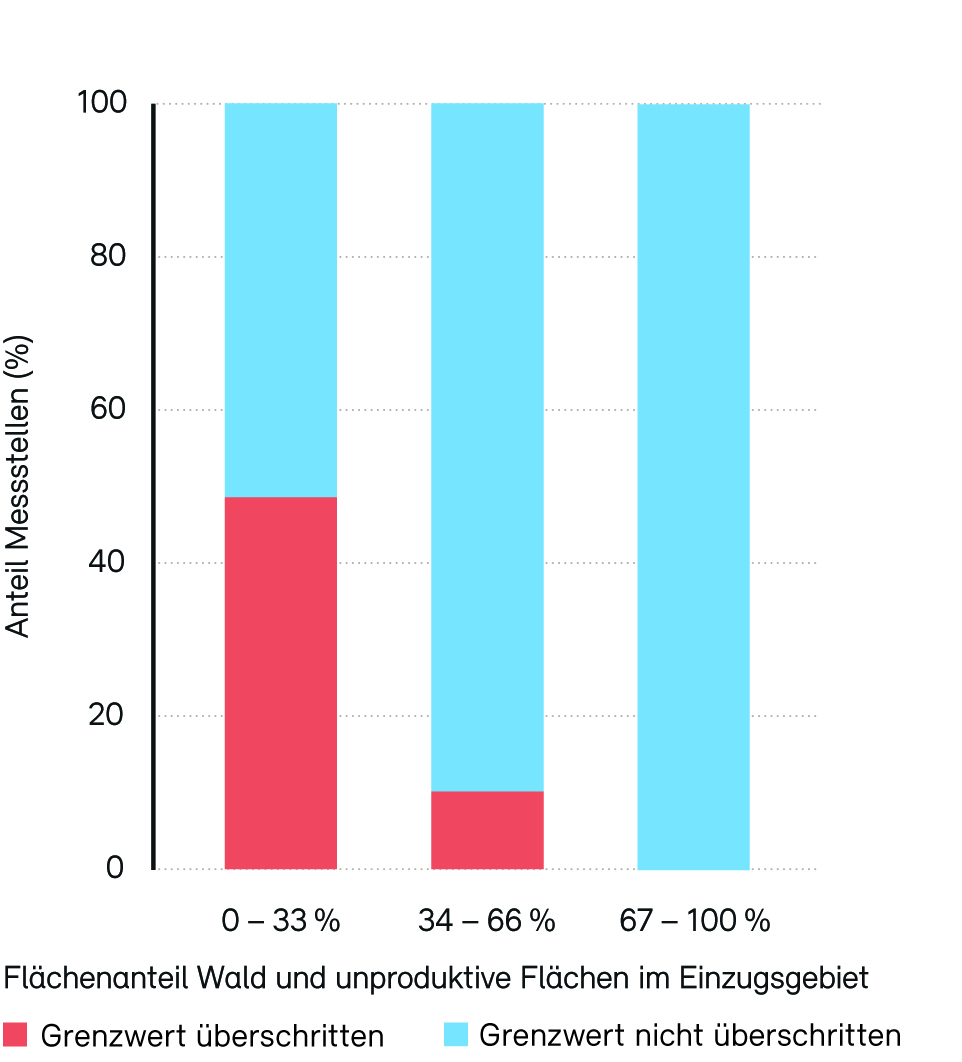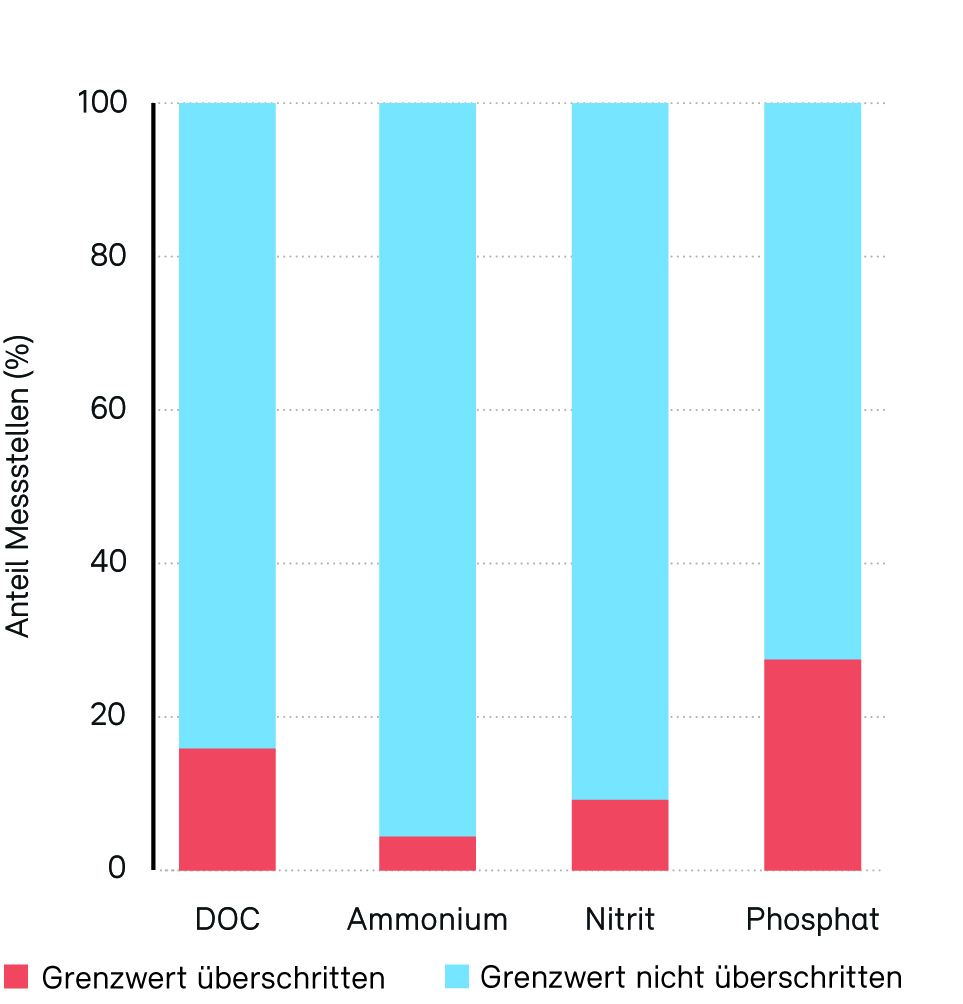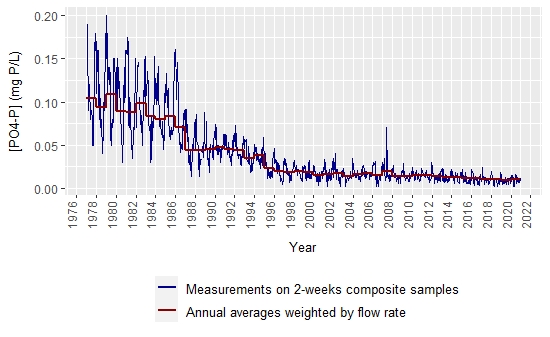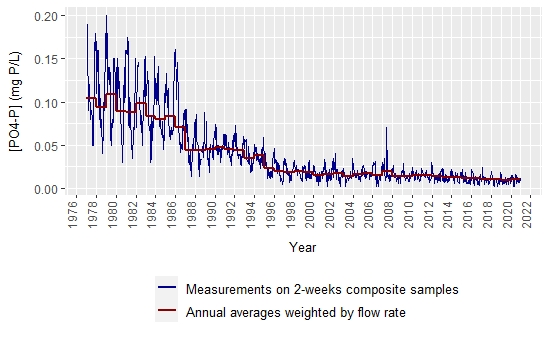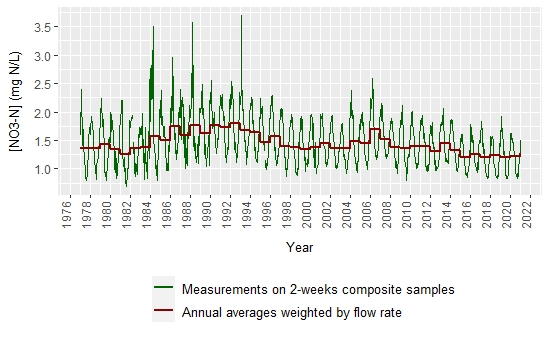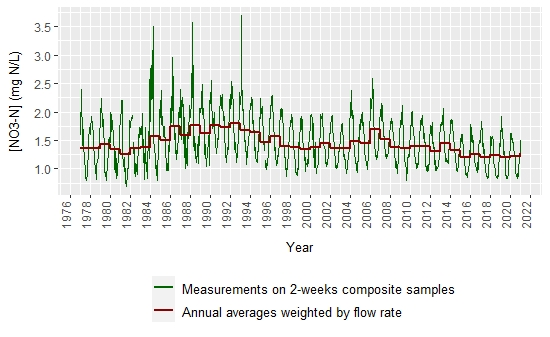Nutrient concentrations in watercourses are highest where many nutrients are discharged via wastewater treatment plants (WWTPs) and from agriculture. This is particularly the case on the Swiss Plateau and on the valley floors. Nutrients enter lakes and the sea via rivers. High concentrations of nitrates in Swiss water contribute to their overfertilisation from nitrogen.
Effective wastewater treatment
Nutrient pollution in watercourses has been drastically reduced in recent decades. The main reason for this is effective wastewater treatment, which is applied practically throughout the country. Ammonium and nitrite concentrations that are dangerous for fish have become rarer since the 1990s. However, every year local slurry spills cause acutely toxic nutrient concentrations that lead to the death of dozens of fish.
Nutrient concentrations in watercourses are highest in water discharged via wastewater treatment plants (WWTPs) and from agriculture. This is confirmed by the results produced by National Surface Water Quality Monitoring (NAWA): the smaller the proportion of forest and unproductive land in a monitoring site's catchment area – i.e. the larger the proportion of intensive agricultural land or settlement area – the higher the nutrient concentrations. Smaller watercourses such as streams dilute nutrients to a lesser extent, so they tend to have higher nutrient concentrations than in rivers.
Nutrient concentrations still too high
Despite improvements, over the past decade nutrient concentrations have remained above the limits at up to a third of NAWA monitoring sites. The following nutrients were measured: dissolved organic carbon; nitrogen in the form of ammonium and nitrite; and phosphorus in the form of algae-available phosphorus.
No images in this gallery
Switzerland is responsible for too much nitrogen in the oceans
Nitrate, a compound of nitrogen and oxygen, accounts for the largest share of the nitrogen load that reaches the oceans via Swiss rivers. This excess nitrogen in the form of nitrate contributes to the overfertilisation of the oceans. In the Rhine near Basel, the nitrogen load from Switzerland decreased by about one third in the 1990s. However, it has changed very little since the 2000s. As a result, the reduction target for protecting the North Sea has not yet been reached. The picture is somewhat different for phosphorus; the loads in the Rhine have fallen below the reduction target.
National water quality monitoring programme
To monitor the nutrient and pollution levels in watercourses, rivers and streams are studied at over 400 monitoring sites as part of the National Surface Water Quality Monitoring Programme (NAWA) and cantonal monitoring programmes.
The Confederation, in collaboration with the two federal research institutes Eawag and WSL, collects data on substance loads in the larger rivers in the National River Monitoring and Survey Programme (NADUF).
Further information
Last modification 23.08.2022


